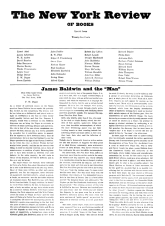This is the first published book of a sociologist and city planner who has for some years been engaged in a first-hand analysis of certain aspects of America society. For eight months he lived in the West End of Boston, a low-income Italian district, just on the eve of its total demolition for replacement, under the urban renewal process, by expensive new buildings. Gans has the capacity, increasingly rare among American sociologists, to get to where the news is: when he was in the West End, as the one-man forerunner of a huge social psychological study of the impact of relocation on the mental health of the West Enders, the question was (and still is) what urban renewal would do to low-income areas whose status as slums as slums was open to doubt.
But in this book he tells a different story: the true character of the working class in America. The West End was largely Italian, and Gans describes the life of Italian-Americans after they have left Little Italy, the immigrant community of first settlement (the West Enders were mostly native born), and before they become middle class—which is so often the case with the children or grandchildren of immigrants. But Italians end up later and less frequently in the middle class than other immigrant groups. Gans calls this a “peer-group” society, and he means by that that the strongest social grouping is not the nuclear family of man-wife-children, or the extended family of three generations, but the boys (and less so, the girls) with whom one grew up. The boys and girls separate from the group sufficiently to marry; they then tend to revert back to these (or other) one-sex groups of childhood friends and relatives. As life closes in on them, their main amusement is the nightly get-together, where they tell each other stories about when they were kids, and the rare episodes of “action” they run into as adults. This is an “adult-centered” society, in which the children are tolerated and casually disciplined, and grow up the same way, accepting a life of occasional blows and much hard work. They do not understand settlement house workers who tell them they should want something different out of life. They are suspicious of outsiders, are convinced the government is a bunch of crooks, and aside from occasional explosions of anger have little capacity to influence society for their own interest. It was only outsiders who could have saved the West End from the bulldozers, though it was the natives who felt its loss most painfully.
Is this an Italian world or a working-class world? As Gans describes it, it is vividly Italian; he argues, however, that in its main forms it is a variant of a general Western working-class culture which the middle class scarcely knows and does not recognize. I am not sure. It is very different form the working class worlds of Negroes and Puerto Ricans and much like Southern Italy. But whatever he calls it, Italian-American or working class, he has given a strong picture of a culture and a way of life. And on occasion—as in his account of the last days of the West End—he has achieved an eloquence that makes this book more than a work of journalism or American sociology. It is one of that small company of books that describes truthfully and without damaging preconceptions a part of American reality.
This Issue
February 1, 1963



